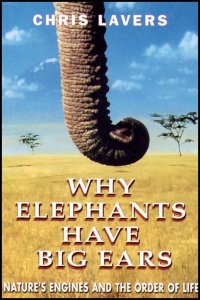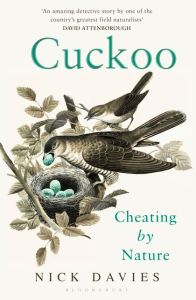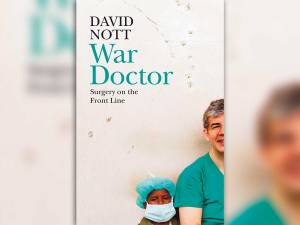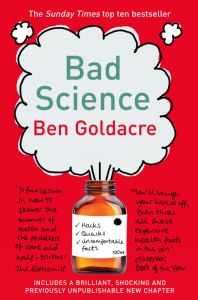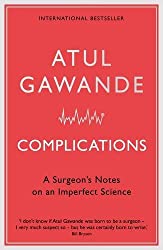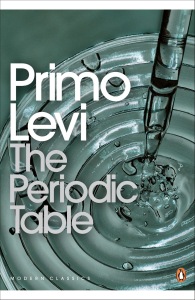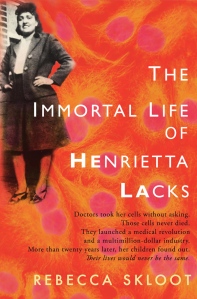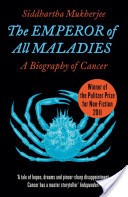The goodbye and thank you cards that I get from students at the end of the summer term were particularly poignant this year. Not only were we all deprived of the usual farewell rituals of Leavers’ Ball and MuckUp Days, the actual classroom teaching was abruptly cut off so that many of the things I would normally do with classes I won’t see again didn’t happen. This included, as one Year 11 student lamented, The Malaria Story.
No worries! If I can’t tell the story as part of a lesson, I can always put it in the burbles. But before I launch into this particular tale, I think there’s a general point here about teachers and teaching. In fact, if I had one bit of advice to give an aspiring teacher, it would be this: go and do something else first! In other words, don’t go into teaching immediately after leaving college. Travel the world. Do voluntary work in another country. Work at another career. And do this for at least 5 years.
I would actually recommend this to any young person who is not sure what to do with their lives – go and explore life while you are still free to do so. Mortgage, marriage, family, can all come later. Life is short and you don’t want to get to the age of 30 and think, “If only…” As, for the specific benefits to a teacher, these are many. Entering the profession in your mid to late 20s means you have more maturity, greater gravitas, a vital sense of perspective, a better idea of who you are and, crucially, a deep fund of stories… If you go in to teaching straight after college, then all you will have every known is school, university, school….
I tell the Malaria Story to my Year 11s or 12s as part of their work on Disease and Immunology. In fact, my time in the tropics has yielded lots of useful stories that can enliven or illustrate this particular area of biology. The time I literally saved someone’s life by correctly diagnosing and treating bacterial dysentery. My brush with bilharzia. The tropical boil that tells you all you need to know about neutrophils. And so on. As an aside, I think it’s a great shame that there isn’t much more of this on the A-level spec. and lamented the passing of OCR’s Health and Disease module, even if the dietary stuff was pretty grim, as it’s a topic that is always relevant and always fascinating to students.
But I digress!
My Malaria Story
So I had been in Uganda about 6 months, working as a research volunteer on the Uganda Kob (look them up!) project. I was 23 years old. We were based on the Mweya peninsula in Queen Elizabeth National Park in the south west of the country, a spectacular section of the Great Rift Valley. And for 6 months I had been dutifully taking my malaria prophylactics, which back in those days consisted of 2 paludrine pills a day and 2 chloroquine pills a week. Every evening, after a busy day of driving round the park to study the kob and their bizarre lekking behaviour (look it up!), we would come back to our ramshackle research house and have supper out on the veranda, listening to the hippos rumbling in the Kazinga Channel, or moving through the yard on their way to graze on the airfield. There were the sounds of hyenas and elephants and leopards and lions, the constant noise of cicadas, and the whine of mosquitoes.
On the evening in question, Fred, the project house manager, had cooked one of his amazing spicy bean stews with rice and sweet potato and avocado. I was half way through this when I suddenly had an attack of what I believe is termed “fecal urgency”. In other words, I had to go to the toilet NOW!!!!
I was able to stagger past the table of researchers, into the house – lit only by paraffin lamps, there was no electricity – made it to the loo, experienced really quite dramatic diarrhoea, and then passed out. If you’ve ever fainted, you’ll know that regaining consciousness is the most unsettling part, your brain is still fuzzy, you are completely disorientated, and, in this case, I was on the floor of a toilet in the pitch black. I remember feeling completely lost, unable to tell up from down, and having not a clue where I was. Eventually, I pulled things together sufficiently and, feeling extraordinarily weak, I crawled to the bedroom and collapsed on my bed.
The next half hour was this scene repeated every 5 minutes or so – torrential diarrhoea followed by fainting. As I tell my classes, it was good that it was in this order…
… and then the diarrhoea/fainting combo stopped, and I suddenly felt freezing cold. This, remember, in the western rift valley, on the equator, where the night time temperature was about 25’C. I piled on blankets and sleeping bag but could not stop shivering. This lasted, I don’t know, another half hour? Long enough, at least, for people to start noticing that I hadn’t come back to the supper table (thanks, guys!) and come to see if I was OK. Anyway, as they found me, the shivering stopped and was replaced by a rocketing temperature that saw a fever topping out at over 40’C.
All of which made the diagnosis pretty straightforward. Leafing through the pages of our go to field medical guide, Where There Is No Hope Doctor (great book! every biology department should have one!), they ticked off the symptoms, diagnosed malaria, and promptly opened the box of malaria pills. Quinine. 2 tablets, roughly the size of depth charges, to be taken every 8 hours for 5 days.
The pills were horrible. Bitter, difficult to swallow, and with horrible side effects, including tinnitus, but boy did they work – the malaria symptoms stopped immediately, the parasite vanquished, and I just had to lie in bed for a week, feeling pathetically weak as a result of most of my red blood cells having exploded through Plasmodium falciparum invasion….
All of which sets the scene for important discussion about types of pathogen and vectors and immune responses and how many drugs are derived from plant based products and how African economic development is crippled by chronic diseases, from malaria to whipworm.
There are also some important follow up points, particularly for students planning similar adventures in the tropics!
- the prophylactic pills do not give 100% protection. I had not missed a dose in 6 months, but I still got the disease. Plus, as I reflected at the time, chloroquine does funny things to your eyes and paludrine makes your hair fall out, both factors I already had enough problems with (this generally gets lots of laughs). Plus, these pills might be OK for a 2 week holiday, but I was going to be in Uganda for at least at year (it ended up being 5 years) – the cost would have been astronomical. So I made the conscious and deliberate decision to a) stop taking the pills and b) make much more stringent efforts to not get bitten by mosquitoes. It worked. Sleeping under a mosquito net, wearing long sleeves and trousers and socks and slapping on gallons of Deet and burning mosquito coils in the evenings… and I have never had a recurrence in the next 5 years in Uganda or 2 years in Zimbabwe.
- I had finished the course of quinine, but still felt incredibly weak as my red blood cells were slowly replaced. Nonetheless, I was determined to call my mother on her birthday! Before the days of mobiles and satellites and internet and networks, this was a major operation. I had to borrow the project landrover, drive an hour to Kasese, just north of the equator, and book time on the only landline at the post office. Then, if the wires that ran on some improbable route from Western Uganda all the way to Truro, Cornwall, were miraculously intact, I could get a very faint connection with several seconds of delay as the conversation went back and forth. It went, I recall, something like this…
“Hi Mum! Happy Birthday!”
“Paul! How lovely to hear from you! How are you?”
“I’m OK, thanks. I’ve had malaria…”
“WHAT!!!!!@@@@@^&%^&^%!!!!?!?!?!?@@@@*****”!!!!*****~~~~!!!!!”
As my poor parents melted down with helpless worry and anxiety and stress, it slowly penetrated my young, selfish brain that maybe this hadn’t been the most thoughtful moment of my life. So if you have a problem when you’re abroad, and you’re OK, but you’re 1000s of miles from home and your parents cannot help in any possible way… just don’t tell them…

